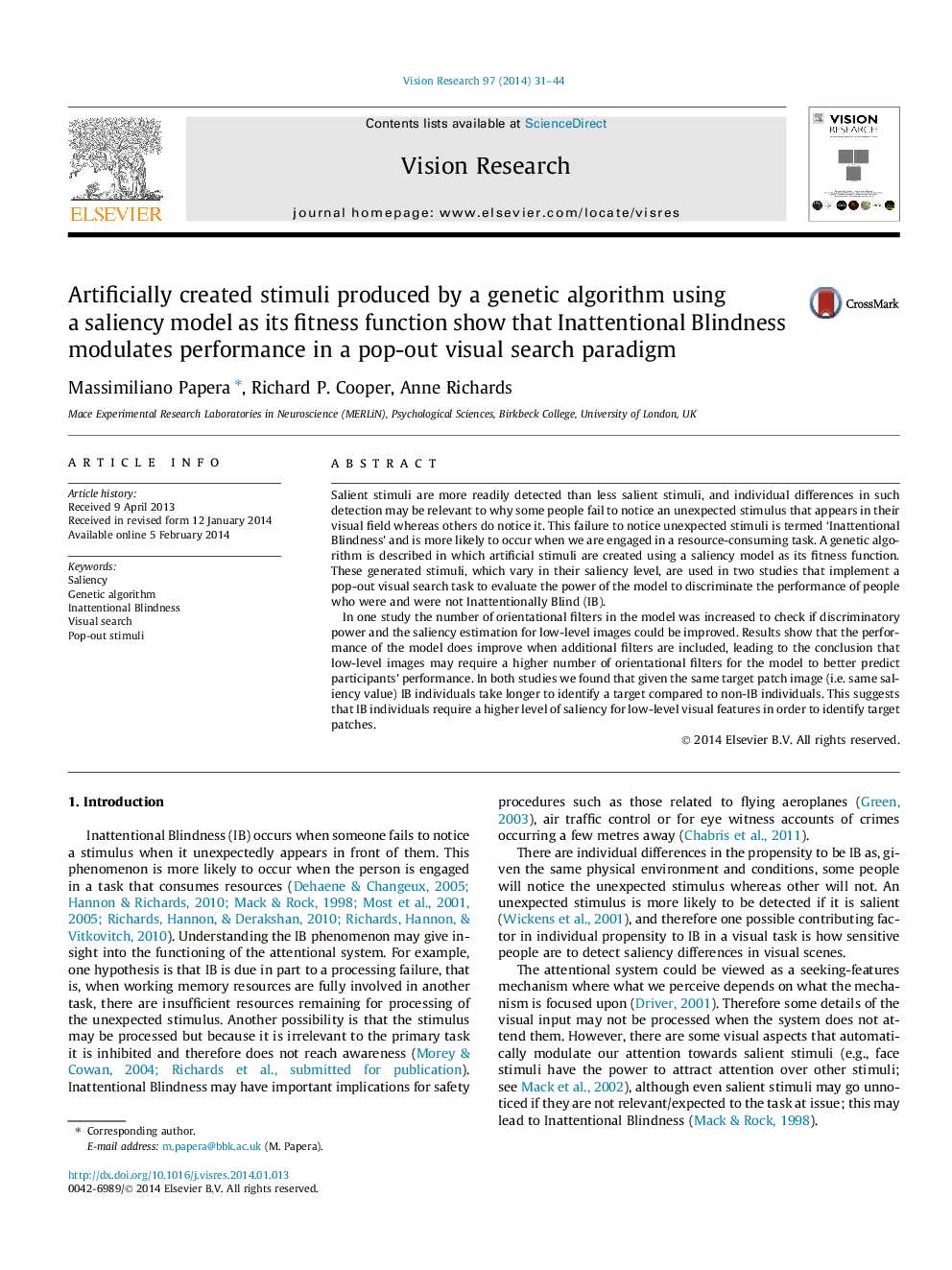| کد مقاله | کد نشریه | سال انتشار | مقاله انگلیسی | نسخه تمام متن |
|---|---|---|---|---|
| 6203537 | 1603197 | 2014 | 14 صفحه PDF | دانلود رایگان |
- Individual differences in Inattentionally Blind (IB) individuals were investigated.
- A GA generated stimuli assessed by a saliency model used as a fitness function.
- A visual search task used these stimuli (Randmorphs) to evaluate RT performance.
- IB individuals require higher saliency levels for target detection than non-IBs.
- A model with more orientational filters discriminates better between IBs and non-IBs.
Salient stimuli are more readily detected than less salient stimuli, and individual differences in such detection may be relevant to why some people fail to notice an unexpected stimulus that appears in their visual field whereas others do notice it. This failure to notice unexpected stimuli is termed 'Inattentional Blindness' and is more likely to occur when we are engaged in a resource-consuming task. A genetic algorithm is described in which artificial stimuli are created using a saliency model as its fitness function. These generated stimuli, which vary in their saliency level, are used in two studies that implement a pop-out visual search task to evaluate the power of the model to discriminate the performance of people who were and were not Inattentionally Blind (IB).In one study the number of orientational filters in the model was increased to check if discriminatory power and the saliency estimation for low-level images could be improved. Results show that the performance of the model does improve when additional filters are included, leading to the conclusion that low-level images may require a higher number of orientational filters for the model to better predict participants' performance. In both studies we found that given the same target patch image (i.e. same saliency value) IB individuals take longer to identify a target compared to non-IB individuals. This suggests that IB individuals require a higher level of saliency for low-level visual features in order to identify target patches.
Journal: Vision Research - Volume 97, April 2014, Pages 31-44
